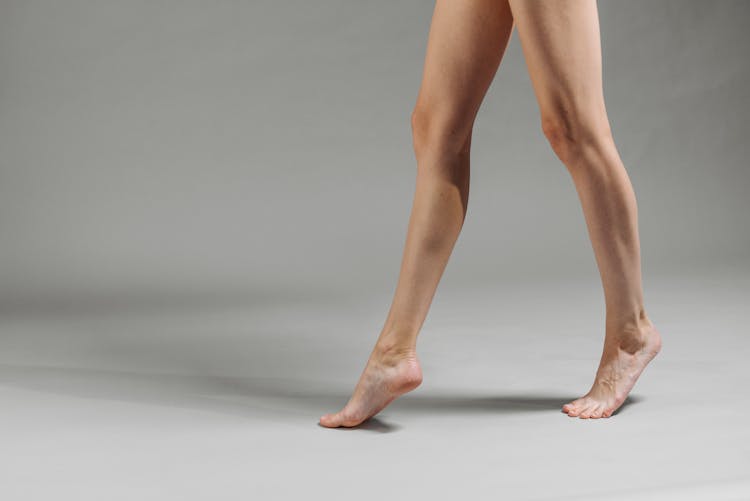All Categories
Featured
Table of Contents
TLDR Summary
- 🔄 Proprioception enhances body awareness and movement.
- ⚖️ Crucial for maintaining balance and coordination.
- 🧓 Affected by age and physical injuries.
- 🏃♂️ Exercise interventions can improve proprioceptive abilities.
- 📚 Understanding proprioception is key to personal safety.
Proprioception is one of the body's essential senses, often overshadowed by sight or hearing, yet it holds significant power in how we function daily. Without proprioception, simple actions like walking, balancing, or swiftly adapting to obstacles would become exceedingly challenging. Our bodies are equipped with proprioceptive receptors that feed us information about our limbs' positions and movements, essentially creating a mental map of our physical awareness. This complex feedback loop enhances our motor control and plays a vital role in how we move through our environments, adapt to changes, and maintain safety and stability.
Proper proprioceptive function integrates seamlessly with visual systems and the vestibular system (which contributes to our sense of balance). The collaboration among these systems is vital for activities requiring precision and coordination, such as sports, dance, and even everyday tasks like climbing stairs. Therefore, maintaining and enhancing proprioception has ripple effects that encompass both athletic performance and general health by reducing the risk of injuries and falls.
Aging often brings a decline in proprioceptive function, making it increasingly crucial for older adults to focus on enhancing this sense through various interventions. Injuries, such as ankle sprains or issues stemming from conditions like arthritis, can significantly impair proprioception, leading to an increased risk of further injuries. Rehabilitation efforts often incorporate proprioceptive training to aid recovery and improve balance. Additionally, central nervous system injuries, like those resulting from strokes, can lead to proprioceptive deficits, profoundly affecting one's ability to perform functional tasks.
Engaging exercises that challenge your balance during movement can be extremely effective, especially when overcoming these deficits. Simply closing your eyes while performing balance or posture exercises can significantly enhance the challenge and engagement of the proprioceptive system. Activities such as standing on one leg, performing kicks with closed eyes, or practicing tandem walking are accessible exercises that anyone can implement. Equipment like balance boards can also provide dynamic challenges, making workouts both fun and beneficial.
Incorporating simple proprioceptive exercises can equally enrich athletic training regimes, enabling athletes to refine their skills and reduce the risk of injuries. Engaging in exercises like the one-leg balance test or one-leg three-way kicks can enhance movement awareness and improve overall performance. These exercises serve not only to bolster proprioception but also cultivate a sense of accomplishment and enhance the body’s ability to execute more complex movements with precision.
On top of these physical exercises, education plays a significant role in addressing proprioception-related issues. A greater understanding of how proprioceptive impairments may influence daily life can motivate individuals to adopt practices and exercises that enhance their overall movements. Knowledge helps individuals recognize and adapt their environments to minimize risks associated with proprioceptive deficits, such as uneven surfaces or changes in terrain that could lead to falls.
As we continue to unlock the potential of proprioception, technology is beginning to make its mark too, with innovative solutions like vibrating insoles, which have been shown to improve the balance of older adults. Passive interventions, such as taping and compression, also serve as valuable additions to enhancing proprioceptive feedback, specifically in individuals recovering from injuries. Through both active and passive interventions, the relationship between proprioception and improved balance and coordination illustrates a fascinating intersection of science and practical application.
Overall, the importance of proprioception cannot be understated. Not only does it enhance athletic performance, but it also plays a profound role in daily life, showcasing how crucial it is for maintaining balance, avoiding injuries, and ensuring a healthy lifestyle. The simple act of improving proprioception through targeted exercises can yield significant benefits, making individuals more aware of their bodies and their movements.
Those interested in enhancing their movement capabilities might consider exploring products such as the Joomra Women’s Minimalist Trail Running Barefoot Shoes, which can promote a more natural alignment and foot awareness. Conversely, options like the Titype Hike Footwear Barefoot Shoes provide a suitable alternative for those looking for both comfort and performance.
Building strength in proprioception can also lead to deeper connections with our body mechanics. Balancing exercises, combining the body's awareness with practical application in complex tasks leads to a profound change in how we navigate space. This can lead to heightened physical autonomy, as enhancing foundational movement skills positively influences emotional states, confidence, and body image. Enhanced proprioception thus not only guides our movements but shapes our perceptions of ourselves in relation to the world around us.
Proprioception Through Shoes
Understanding proprioception can open doors to new mental and physical experiences, enhancing one’s sense of connection to the environment. Research indicates that people experienced improvements by engaging in programs emphasizing proprioceptive awareness, significantly enhancing performance and reducing injuries. Each step taken toward improving proprioception translates into an opportunity for body awareness, resilience, and functional mobility.
What are some simple exercises to improve proprioception?
How does aging affect proprioception?

The Barefoot Breakthrough: Revolutionizing Your Health from the Ground Up
Latest Posts
The Blueprint of Credit Reports
Persistent Weeds: Strategies for Repeated Treatments
Harmony for Health: Diving into Sound Therapy Practices